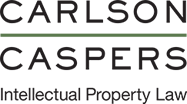[1] See our previous post on this case for a description of the arguments made on either side of the issue.
Recently, a unanimous Supreme Court issued its ruling in Amgen Inc. v. Sanofi, holding that Amgen’s challenged patents ran afoul of Section 112’s enablement requirement.[1] Writing for the Court, Justice Gorsuch focused on the “patent bargain,” where the public benefits from the disclosure of useful new technologies and the patentee benefits from a time-limited monopoly. The Court’s opinion delves into the history of patent statutes in the United States and the Court’s own jurisprudence on the enablement requirement to show that its invalidation of Amgen’s patents is well supported and consistent with the policies that underlie the patent system.
Emphasizing the importance of enablement to the quid-pro-quo premise of patent law, the Court observed that U.S. patent law has required enablement from the very beginning. The Patent Act of 1790 required a patentee to file a specification “so particular” that one skilled in the art would be able “to make, construct, or use the same.” This requirement ensured that “the public may have the full benefit” of a patented invention, and Congress has included some version of the enablement requirement in every revision of the patent statute. The Court also noted that it has addressed the enablement requirement on many occasions. Drawing on cases involving 19th-century inventors such as Samuel Morse and Thomas Edison, Justice Gorsuch observed that the Court has repeatedly invalidated patent claims that claim more than the specification enables.
Applying this policy rationale and the Court’s precedent to the case at bar, the Court held that Amgen simply had not done enough to enable its broad genus claims. While a specification may require a “reasonable amount of experimentation” to arrive at the claimed invention and still pass the enablement hurdle, the court flatly rejected Amgen’s contention that it had provided sufficient guidance to reach the full scope of the claims. The patents-at-issue covered potentially millions of antibodies, and Amgen’s guidance, according to the Court, “amount[ed] to little more than two research assignments.” Since Amgen’s proposed methods of arriving at the claimed antibodies leave a practitioner with no course of action other than “painstaking experimentation,” the Court held that Amgen had not enabled its claims.
With this decision, the Supreme Court has confirmed the continued vitality of the enablement requirement, and endorsed the Federal Circuit’s rule that a specification must enable those skilled in the art to reach the full scope of the claimed invention without undue experimentation. Future patentees are well advised to consider the patent bargain when drafting to ensure that the patent discloses to the public as much as it claims for the patentee. Further, companies in the biosimilar space, in particular, may find that patent portfolios covering reference products are more vulnerable than previously thought.

